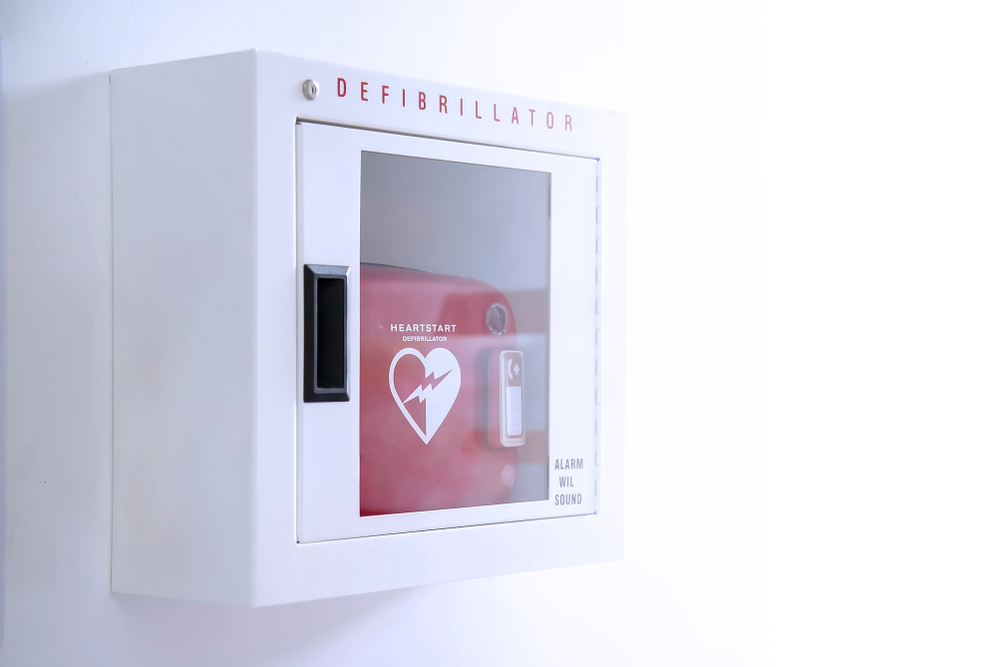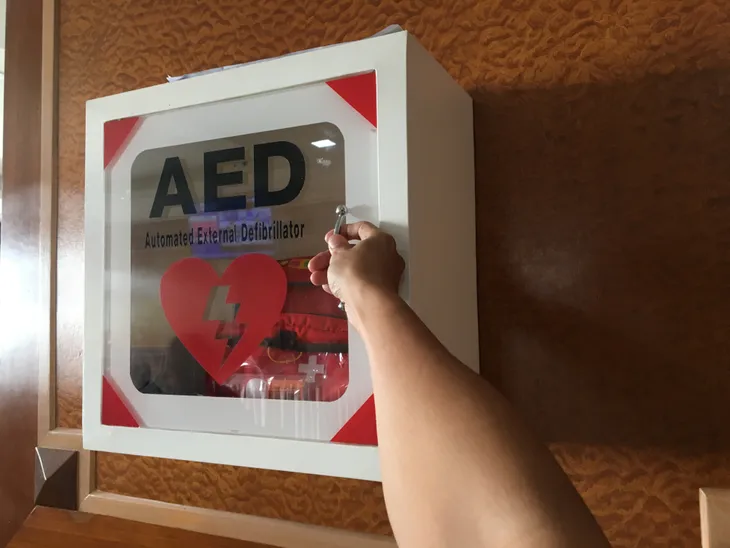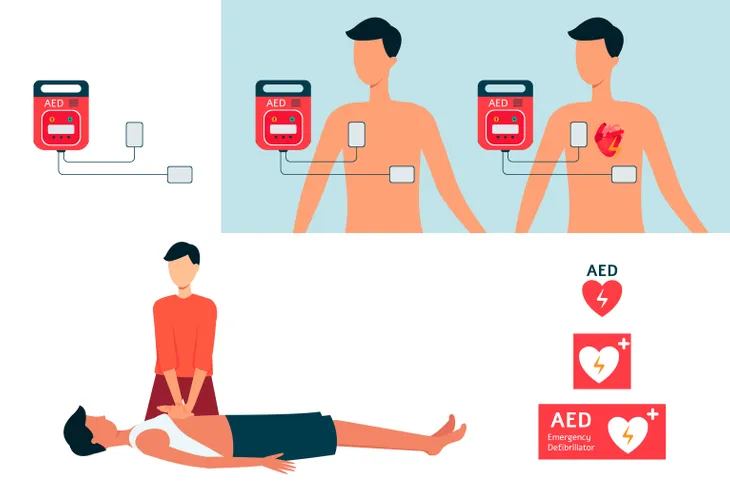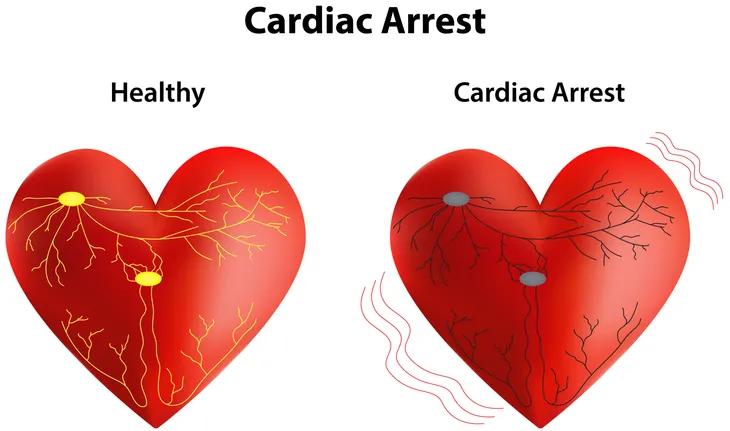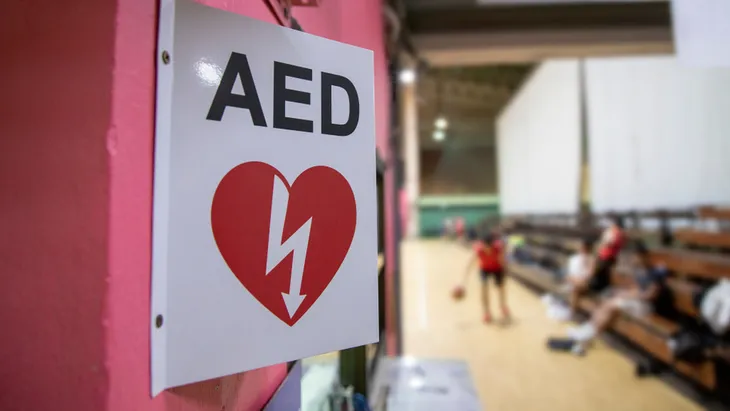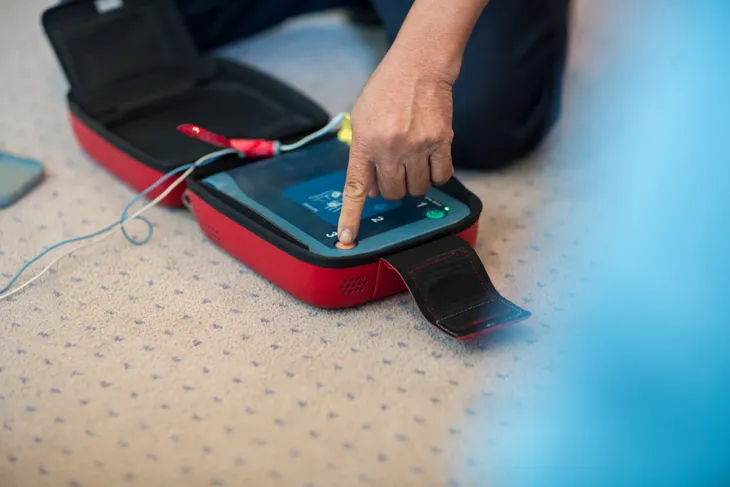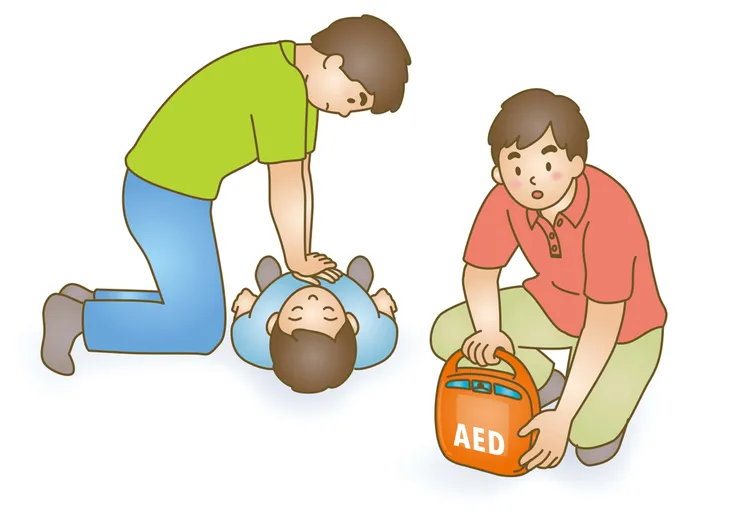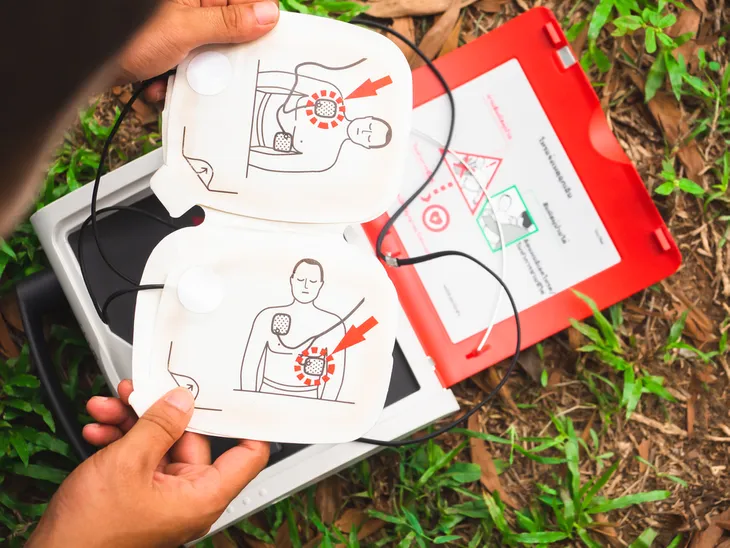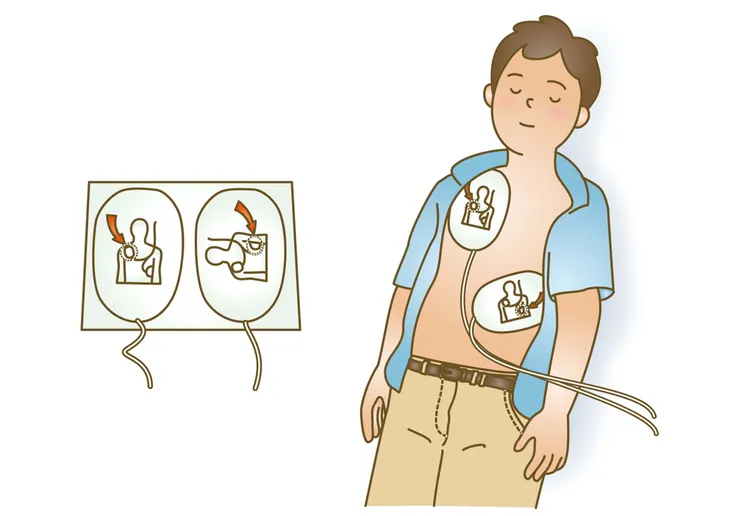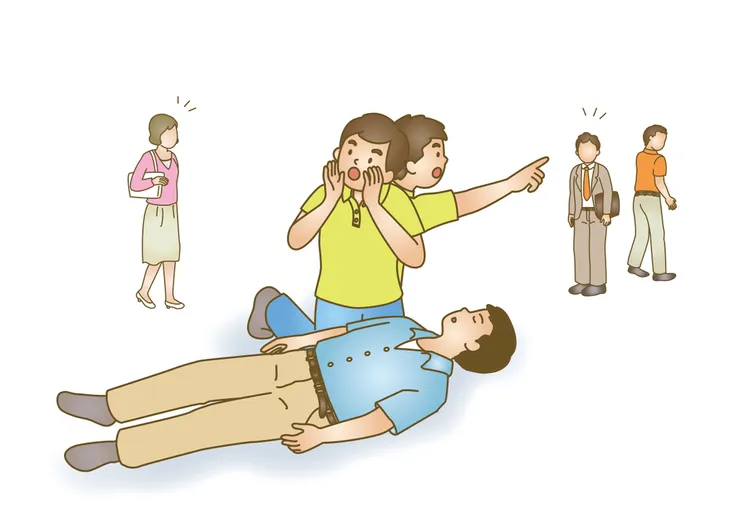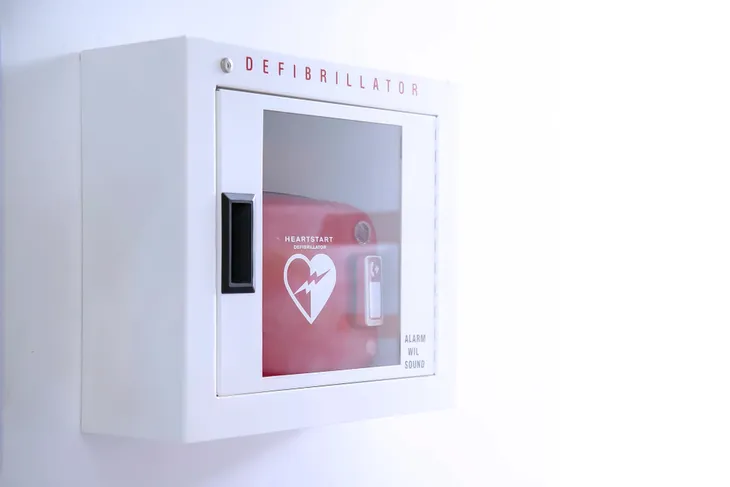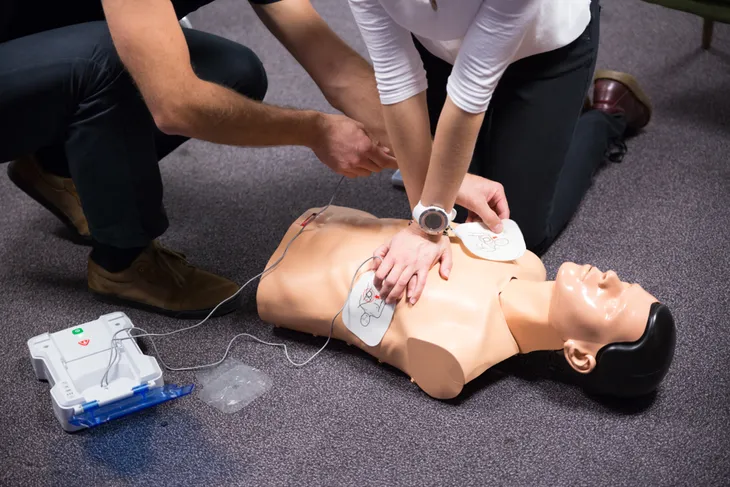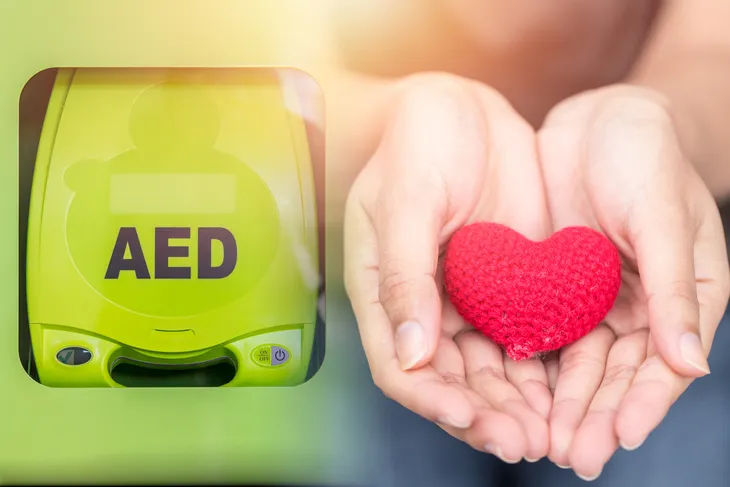If you’ve ever been to a gym, athletic center, school, mall, hospital, football stadium, or outside, it’s safe to say you’ve crossed paths with an AED. These things are reliable, portable, and play a fundamental role in the very fabric of our community’s health care network.
They get results too. When used within the first 3-minutes of a sudden cardiac arrest, an AED can increase survival rates by over 80-percent. AEDs can save lives, but their life-saving ability hinges on the capabilities of the people nearby. Here’s everything you need to know about AEDs.
What Is an AED?
AED, or automated external defibrillator, is a portable medical device used to provide life-saving intervention in the event of a sudden cardiac arrest. AEDs may be small, but these sophisticated devices sure can pack a punch.
AEDs contain small computers that are programmed to detect the rhythm of a person’s heart, pinpoint the type of rhythm, and determine if the rhythm requires attention. If needed, the AED will deliver an electric shock or defibrillation to restart a person’s heart.
AEDs usually come packed with basic instructions, though it’s best to rely on the hands of a trained operator in case of emergency.
How Do AEDs Work?
Once turned on, AEDs rely on a combination of pre-recorded audio instructions and a pre-programmed computer to first ensure that the components are properly positioned by the operator. Once in place, the AED will begin to monitor the rhythm of the unresponsive person’s heart.
Should the device determine a need for defibrillation, the audio instructions will then walk the operator through a series of instructions including how to deliver the electrical shock, as well as how and when to perform CPR.
When Should You Use an AED?
AEDs are designed to deliver an electric shock to the chest of an unresponsive patient in the event of a sudden cardiac arrest. Cardiac arrests can occur at any time, but access to an AED and knowing how to use one can dramatically increase a patient’s chance of survival.
Knowing when to use an AED is often part of the training process and is usually a matter of knowing the signs of cardiac arrest. Operators should get an AED if an individual becomes suddenly unresponsive, stops breathing, doesn’t respond when firmly tapped on the shoulder, doesn’t respond to verbal cues, or doesn’t take a breath when their head is tilted upwards.
In the event of one or more of those signs, call 911 immediately and run to the nearest AED.
Where Are They Located?
As we’ve discussed already, AEDs are very effective in preventing fatalities associated with sudden cardiac arrest. This is why you can find them just about everywhere groups are known to congregate. Gyms, stadiums, schools, community buildings, and most offices have at least one AED nearby.
The affordability and availability of AEDs have led a lot of homeowners to purchase one for their homes and even vehicles. Again, you never know when you may need one, and having one could save a life. The more readily available AEDs, the better.
Who Can Use an AED and How Do You Use It?
Anyone can use an AED. While it’s ideal to have someone who is trained to use an AED, the audio prompts from the machine will guide new users along the way. The machine will determine if someone needs a shock, so no one has to worry about accidentally hitting the shock button at the wrong time.
Still, familiarizing yourself with the steps online presents value too. Let’s take a look at the steps to using an AED.
Step One: Check for a Pulse and Turn the AED On
If a trained operator suspects signs of a sudden cardiac arrest, they should check if the person is breathing and has a pulse. If the person isn’t breathing, or a pulse can’t be found, call for emergency help.
The operator should then turn on the AED and follow along as the automated voice instructs them to properly position the electrode pads on the person’s chest.
Step Two: Listen for Instructions
Once in place, the AED will automatically measure the rhythm of the person’s heart to determine if a shock is needed. If the AED determines that a shock is necessary, the automated voice will instruct the operator to stand back and push a button to deliver the shock.
Once the shock is delivered, the AED will then guide the user through the steps involved in CPR and may instruct them to repeat the process until the professionals arrive.
How Do You Properly Place the Pads?
Safe and Sound says, “Successful defibrillation requires electricity to flow from one electrode pad to the other through the chest.” This is why it’s so important to ensure the pads are placed properly and adhere firmly to the chest.
The source says the chest should be exposed to allow proper placement of the disposable electrode pads. Their clothing may need to be cut off. If their chest is hairy, you’ll need to remove the hair as quickly as possible. Finally, if there is any water or sweat on the skin, be sure to wipe it dry.
Can You Shock Yourself or Another Bystander by Accident?
When used properly, AEDs are very safe. Safe and Sound says, “The electric shock is programmed to go from one electrode pad to another through the victim’s chest.”
But you should still follow proper safety measures. For example, warning bystanders to stand clear and checking your surroundings before (and during) the shock will help keep you and others around you safe.
How Much Does an AED Cost?
AEDs are meticulously designed to help, not harm patients in distress. They are rigorously tested to meet all federal regulatory standards, and they are designed with batteries that are required to last a minimum of four years. As such, purchasing one for your home or office can be costly.
Consumers and business owners should expect to pay between $900 and $1,200 for an entry-level unit, with higher-end models often costing $2000 or more.
How to Get Trained to Use an AED
You may read through the above instructions and think that you can handle operating an AED without formal training. But that couldn’t be further from the truth. Reading about something and actually using it are two very different things, especially in a life-threatening situation.
To prepare yourself to use an AED in a real-life crisis, you must get trained. Thankfully, signing up and completing the certification course has never been easier. The American Heart Association offers training through their website. As does the American Red Cross.
Training programs often include CPR alongside AED training, ensuring that you will be prepared whenever a crisis occurs.
The Takeaway
We hope this AED introduction helped illuminate the importance of AED availability and proper certification. AEDs are powerful tools that, when operated by a trained individual, can save lives.
If you’re at all curious, sign up for a weekend course and prepare yourself and your family for anything. Remember, in the event of a sudden cardiac arrest, time is of the essence. Know where the closest AED is, and be prepared to use it when the time comes.
